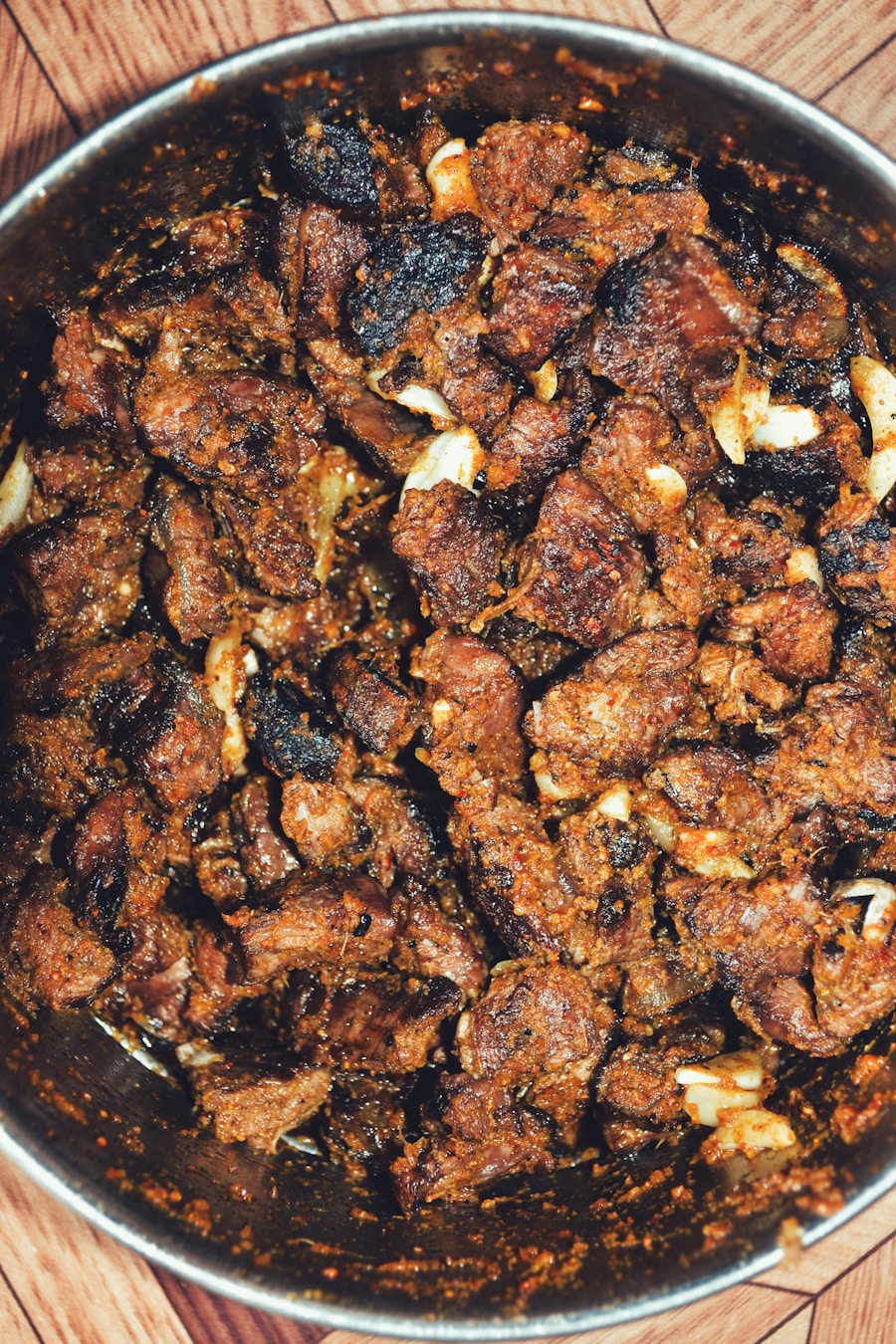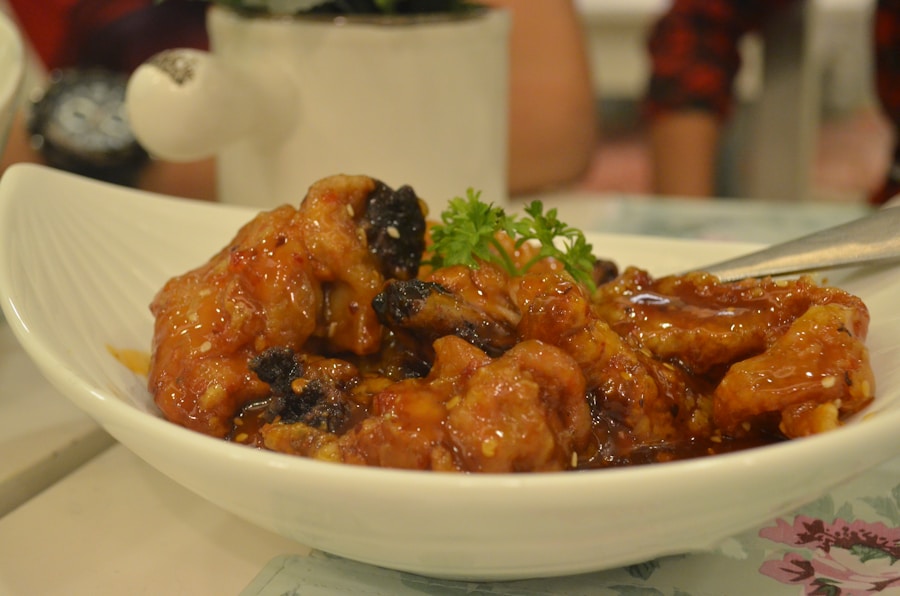The Ultimate Guide to Making Adobo: A Flavorful Tradition
Description
Adobo, a dish that has become synonymous with Filipino cuisine, boasts a rich and complex history that reflects the diverse influences that have shaped the Philippines over centuries. The term “adobo” is derived from the Spanish word “adobar,” which means to marinate or season. This culinary tradition can be traced back to the pre-colonial era when indigenous Filipinos utilized vinegar, salt, and spices to preserve meat in the tropical climate.
The arrival of Spanish colonizers in the 16th century introduced new ingredients and cooking techniques, leading to the evolution of adobo into the beloved dish it is today. The fusion of indigenous practices with Spanish culinary methods resulted in a variety of adobo styles, each with its own unique flavor profile. While the Spanish influence is evident, it is essential to recognize that adobo is not a singular recipe but rather a collection of regional variations that reflect local ingredients and cultural practices.
For instance, in the Visayas region, adobo may incorporate coconut milk, while in other areas, it might be prepared with soy sauce or even fruits like pineapple. This adaptability has allowed adobo to transcend generations, making it a staple in Filipino households and a symbol of national identity.
Key Takeaways
- Adobo has a rich history as a culinary tradition in the Philippines, with influences from Spanish colonization and indigenous cooking techniques.
- Essential ingredients for authentic adobo include vinegar, soy sauce, garlic, bay leaves, and black peppercorns.
- To cook perfect adobo, marinate the meat in the adobo sauce for at least 30 minutes before simmering it in a pot until tender.
- Adobo has many regional adaptations and variations, such as adobo sa gata (with coconut milk) and adobong puti (without soy sauce).
- Adobo pairs well with complementary side dishes like steamed rice, pickled vegetables, and fresh salads.
- To perfect the flavor of your adobo, consider using different types of vinegar, adjusting the soy sauce to vinegar ratio, and experimenting with additional spices like paprika or chili flakes.
Essential Ingredients for Authentic Adobo
To create an authentic adobo, one must gather a selection of essential ingredients that form the backbone of this iconic dish. The primary components typically include meat—commonly chicken or pork—along with vinegar, soy sauce, garlic, bay leaves, and black peppercorns. The choice of meat can significantly influence the final flavor; chicken adobo tends to be lighter and more delicate, while pork adobo offers a richer and heartier experience.
Vinegar serves as a crucial ingredient in adobo, providing both acidity and depth of flavor. Various types of vinegar can be used, such as cane vinegar or coconut vinegar, each imparting its unique character to the dish. Soy sauce adds a savory umami element that balances the tanginess of the vinegar.
Garlic is often used liberally, contributing aromatic notes that enhance the overall taste profile. Bay leaves and black peppercorns are added for their fragrant qualities, infusing the dish with warmth and complexity. Together, these ingredients create a harmonious blend that defines authentic adobo.
Step-by-Step Cooking Instructions for Perfect Adobo

Cooking adobo is a straightforward process that allows for flexibility and personal touches while adhering to traditional methods. To begin, one must first prepare the meat by cutting it into uniform pieces to ensure even cooking. In a large bowl, combine the meat with soy sauce, crushed garlic, bay leaves, and black peppercorns. Allow this mixture to marinate for at least 30 minutes; however, longer marination can enhance the flavors even further.
Once marinated, heat a generous amount of oil in a large pot or skillet over medium heat. Sear the marinated meat until it develops a golden-brown crust on all sides. This step not only adds depth of flavor but also creates a beautiful presentation.
After browning the meat, pour in the vinegar without stirring; this allows the vinegar to cook off its raw acidity before adding other liquids. After a few minutes, add water or broth to the pot along with any remaining marinade. Bring the mixture to a boil before reducing the heat to low and allowing it to simmer gently for about 30 to 40 minutes.
This slow cooking process allows the flavors to meld beautifully while tenderizing the meat.
Variations and Regional Adaptations of Adobo
| Region | Variation | Key Ingredients |
|---|---|---|
| Philippines | Classic Adobo | Chicken or pork, soy sauce, vinegar, garlic, bay leaves |
| Mexico | Adobo Sauce | Dried chilies, vinegar, garlic, oregano, cumin |
| Peru | Adobo de Chancho | Pork, aji panca (chili pepper), garlic, cumin, vinegar |
| Puerto Rico | Adobo Seasoning | Garlic powder, onion powder, oregano, black pepper, salt |
Adobo is not a monolithic dish; rather, it is a canvas for regional adaptations that showcase local ingredients and culinary traditions. In the northern regions of Luzon, for example, one might encounter “adobo sa puti,” which is characterized by its use of white vinegar and omits soy sauce entirely. This version highlights the sharpness of vinegar while allowing the natural flavors of the meat to shine through.
In contrast, the Visayas region often features “adobo with coconut milk,” which adds a creamy richness to the dish. The incorporation of coconut milk not only enhances the flavor but also provides a delightful contrast to the acidity of vinegar. Additionally, some regions experiment with fruits such as pineapple or mango, introducing sweetness that balances the savory elements of adobo.
These variations reflect not only geographical differences but also cultural influences that have permeated Filipino cuisine over time.
Pairing Adobo with Complementary Side Dishes
When serving adobo, it is essential to consider complementary side dishes that enhance the overall dining experience.
The simplicity of rice allows the bold flavors of the dish to take center stage while providing a satisfying texture.
Another popular accompaniment is “ensalada,” a fresh salad made from tomatoes, onions, and sometimes cucumbers or mangoes. This refreshing side dish offers a crisp contrast to the savory richness of adobo and helps cleanse the palate between bites. For those seeking additional depth, fried plantains or sautéed vegetables can also be served alongside adobo, adding layers of flavor and texture to the meal.
Tips for Perfecting the Flavor of Your Adobo

To achieve an exceptional adobo that stands out from the rest, several tips can help elevate its flavor profile. First and foremost, marination is key; allowing the meat to soak in the marinade for an extended period—ideally overnight—can significantly enhance its taste. This extended marination allows the flavors to penetrate deeply into the meat fibers.
Another important aspect is balancing acidity and sweetness. While vinegar provides necessary tanginess, incorporating a touch of sugar or sweet elements like pineapple can create a more rounded flavor profile. Additionally, experimenting with different types of vinegar can yield unique results; for instance, using apple cider vinegar may impart a milder acidity compared to traditional cane vinegar.
Finally, don’t shy away from garnishing your adobo with fresh herbs like cilantro or green onions just before serving.
By paying attention to these details and embracing creativity within traditional boundaries, one can craft an unforgettable adobo that pays homage to its rich history while delighting modern palates.
FAQs
What is Adobo?
Adobo is a popular Filipino dish that involves marinating meat, seafood, or vegetables in a mixture of vinegar, soy sauce, garlic, and other seasonings, then simmering it until tender.
What are the main ingredients in Adobo?
The main ingredients in Adobo typically include vinegar, soy sauce, garlic, bay leaves, and black peppercorns. The dish can be made with various proteins such as chicken, pork, beef, or seafood.
How is Adobo cooked?
To cook Adobo, the meat or other main ingredient is marinated in the vinegar and soy sauce mixture, then simmered in the same marinade until tender. It is often served with rice.
Is Adobo spicy?
Adobo can be made spicy by adding chili peppers or hot sauce to the marinade, but it is not traditionally a spicy dish. The level of spiciness can be adjusted to suit individual preferences.
What is the origin of Adobo?
Adobo is a traditional Filipino dish that has its roots in Spanish cuisine. The cooking method of marinating and stewing meat in vinegar and spices was introduced by the Spanish during their colonization of the Philippines.





